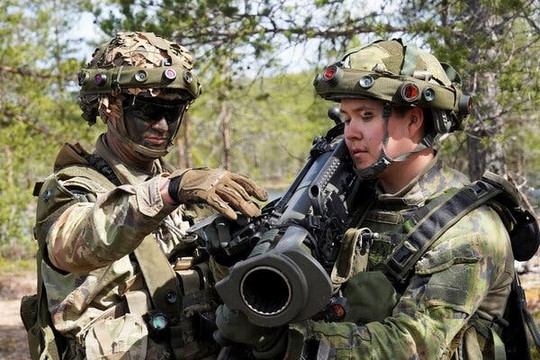An American soldier instructs a Finnish soldier on a recoilless rifle during a military exercise in Rovajarvi, Finland.
Photo: Reuters
After decades of going it alone in security issues, Finns are finding that life in a large alliance is complex, expensive and deeply political. Now Northern Europe and the Arctic more important for the NATO security, The New York Times stresses.
Finland cast aside decades of military nonalignment and self-reliance and joined the NATO alliance. That happened with breathtaking speed, as these matters go, but gaining membership may have been the easy part.
Now comes the complicated process of integrating itself into the alliance and its requirement of collective defense — with all of its financial, legal and strategic hurdles. “Joining NATO is an expensive business, and supporting Ukraine is an expensive business, and there’s no end to that in sight,” said Janne Kuusela, director-general for defense policy at Finland’s Ministry of Defense.
Membership in NATO has long been considered a cheap benefit, given the American nuclear umbrella and the principle of collective defense. Achieving that will demand some difficult and costly decisions from the government and military officials as they learn to think strategically outside Finland’s borders and adapt its forces and their capabilities to the alliance’s needs.
They will have to decide how to move troops and equipment to Norway, Sweden or the Baltic States in the event they need reinforcements, for instance, or whether to participate in other NATO tasks like patrols in Kosovo or the Mediterranean.
At the same time, Finnish officials and analysts say, Finland will not alter its intention of defending every inch of its own territory, given its 830-mile border with Russia, a doctrine considered old-fashioned in the age of modern warfare.
For now, the country is negotiating a bilateral defense cooperation agreement with the United States, the kind of accord Washington has with many countries around the world, making joint exercises easier to plan and quicker to implement. It will cover what kind of U.S. troop presence Finland would allow and where, and what sort of equipment NATO’s most powerful country will be able to bring to Finland for exercises or prepositioning.
The negotiations are complicated, said Elina Valtonen, Finland’s foreign minister, in an interview. “Of course, it’s a balance, how to also defend your sovereignty against an aggressive and unpredictable neighbor, who does not respect the same values that we do with our friends and allies,” she said. “But Finland is a country where, typically, we like to have agreements, we like to have treaties, we are very legalistic.”
Finland’s relationship with the United States is considered as important as the one with the larger alliance, especially given the American nuclear deterrent that protects all NATO members. Finnish law prevents the importation or storage of nuclear weapons on its soil. But Finland will have to decide its policy on nuclear deterrence and the nature of its involvement in shaping NATO’s nuclear policy.
Much of the responsibility for integration with NATO rests with Gen. Timo Kivinen, the commander of Finland’s defense forces. He is familiar with the inner workings of NATO, since Finland has long been a partner nation and involved in NATO exercises; several hundred NATO troops have been stationed almost continuously in Finland since April 2022.
Even as a candidate member, Finland began the first stage of alliance defense planning that July. Now, as a full member, the planning is more intensive, but there is much to consider, he said, to align Finland’s defense plans with those of the larger alliance.
The war has made Northern Europe and the Arctic more important for the security of the whole alliance. So, General Kivinen said, it is also vital that Sweden, a longtime defense partner for Finland, get into NATO soon. That would make alliance planning easier, especially in determining how best to defend the Arctic, the Baltic region and four of the five Nordic countries — Norway, Sweden, Finland and Denmark (Iceland is the fifth).
Already these four have agreed to operate their approximately 250 fighter jets as a joint operational fleet and also to provide air policing for Iceland.
NATO has placed Finland in the land-oriented command based in Brunssum, the Netherlands, which is charged with defending Central and Eastern Europe, including Poland and the Baltic nations.
Finland has already increased its defense budget, in part to pay for the purchase of F-35 fighter jets and new ships to better patrol its seas and hunt for submarines. It vows to spend at least 2 percent of gross domestic product on the military, as NATO desires.
…The NYT article plainly states that the goal of NATO expansion in Scandinavia is the Arctic. A “Russian threat” is only a pretext for the US military force appearance in the Arctic Ocean region from the European side.
read more in our Telegram-channel https://t.me/The_International_Affairs

 10:32 28.09.2023 •
10:32 28.09.2023 •























